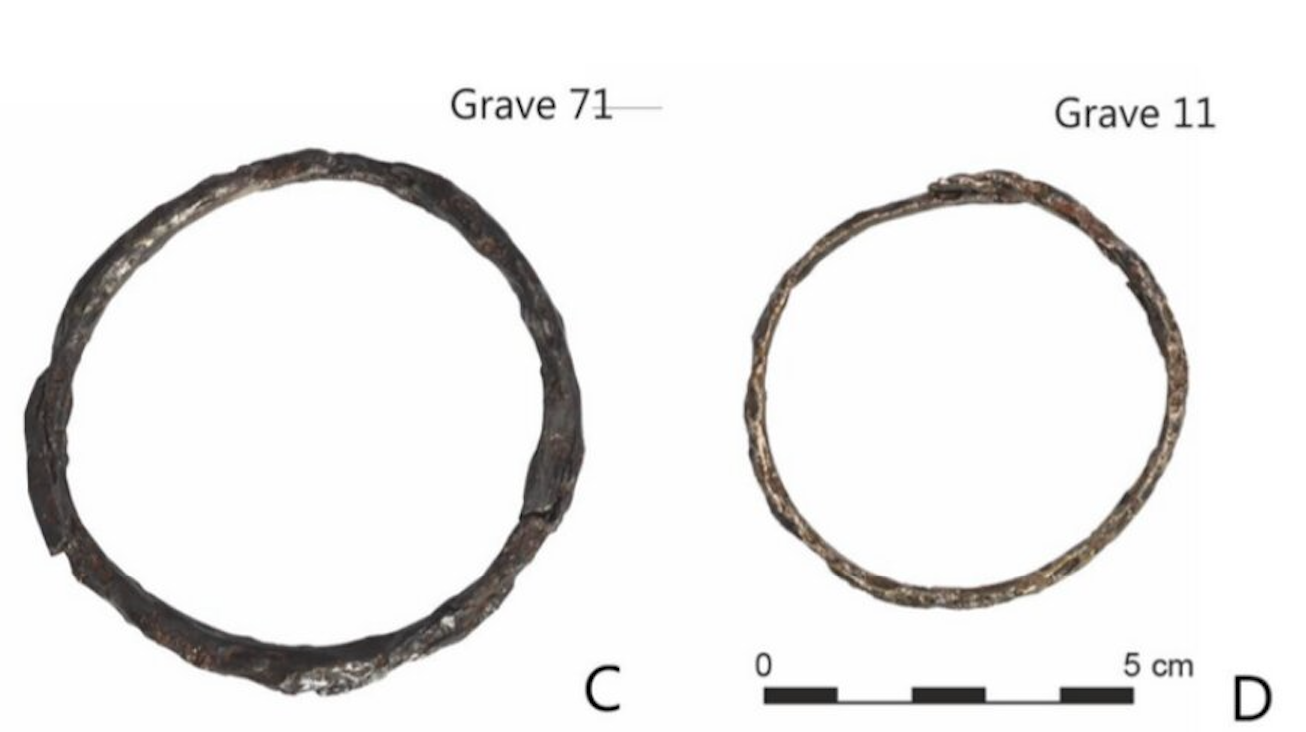Early Iron Age ornaments unearthed in Poland have been found to contain iron from meteorites, suggesting the ancient inhabitants of the region were adept at working the metal much earlier than thought.
The research, published in the Journal of Archaeological Science: Reports, found that about 26 specimens of ornaments, including three bracelets, an ankle ring, and a pin unearthed at an ancient Polish cemetery contained meteoritic iron.
“This modest number of specimens nevertheless forms one of the biggest collections of meteoritic iron products at one archaeological site worldwide,” researchers say.
Scientists suspect people from the Lusatian Culture dated to about 750BC and 600BC deliberately smelted and used iron from meteorites to produce a specific pattern on their jewellery.

In the research, archaeologists assessed artefacts from two Early Iron Age cemeteries – Częstochowa-Raków and Częstochowa-Mirów – both located in southern Poland just about 6km apart.
They used different techniques, including X-ray fluorescence and electron microscopy, to determine the elemental composition of the ancient artefacts.
Researchers found that four of the 26 artefacts, including three bracelets and a pin, were made of meteoric iron, likely from a single meteorite source.
They found that the objects used iron from both smelted ore as well as a meteorite.
The smelted iron, scientists suspect was obtained by trade, possibly from the south-west ores likely from either the Alpine or Balkan ranges, but forged locally.
This raw material, they say, was supplemented by the extra-terrestrial iron.
Subsequent analysis revealed that the iron artefacts were made from a type of “extremely rare” space rock with a high nickel content called an ataxite meteorite.
“Extensive examination suggests that most likely only one single source of meteoritic iron was used,” scientists wrote.
The meteoric iron “was simply used as an iron ore,” they say.
The findings hint that the ancient inhabitants of southern Poland knew how to work iron much earlier than previously thought.
They also suggest meteoritic iron was likely no longer of the same symbolic value as it had in the Bronze Age before the discovery of iron smelting.
“We suggest that the meteoritic iron was deliberately used to produce a specific pattern on iron jewellery – a millennium before the supposed invention of wootz and Damascus steel,” researchers wrote.
Despite being a small find, the findings make southern Poland one of the world’s most saturated meteoric iron archaeological sites on par with ancient Egyptian sites.
Source: independent.co.uk


